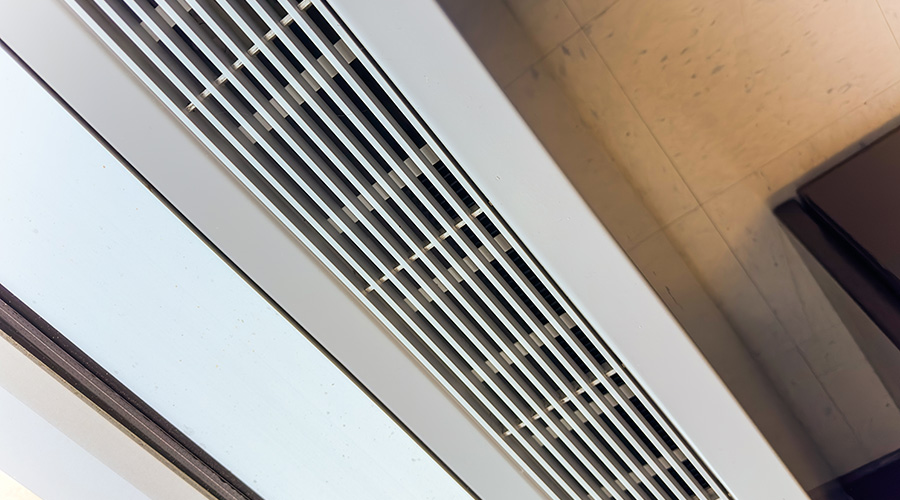Filter-Replacement Plans Save Energy, Improve IAQ
Many facilities report that with a good air-cleaner replacement program, the 90 percent efficient — MERV 14 — final filters in an air-handling unit last at least a year, while the 30 percent efficient — MERV 8 — pre-filters are changed at least monthly.
How can technicians tell when to change filters? Installing a manometer or draft gauge across each filter bed marked for clean and dirty resistance is a good method that allows technicians to visually check the filter loading. Consistent checking will help ensure an effective maintenance program.
Using a differential-pressure sensor across each filter bed connected to the building automation system with an alarm function tied to a maximum pressure drop also will alert technicians to check and change the filters, but notification will occur only at maximum filter loading set point. Excessive loading of the pre-filter can cause filter collapse and plugging of the coils or downstream filters it is designed to protect.
Managers should weigh certain factors in evaluating air filters. They include: types of indoor and outdoor contaminants present; sizes and concentrations of contaminants; air cleanliness required in the space; air-filter efficiency needed to achieve the required cleanliness; space to install and access the filter; and life-cycle cost, including disposal or cleaning of spent filters, and initial, replacement, and storage costs.
Managers also should factor in savings from reduced housekeeping costs, improved IAQ, improved working conditions and employee health. Since air cleaning and replacement is a continual process, the operating cost and anticipated filter life is as important as the initial cost of the filters.
Varying air flows and velocities across filters have not shown to reduce filter performance. Rather, they reduce the energy required to move air through the filter by a corresponding reduction in the resistance or differential pressure across the filter.
Uniform air velocity across all filters in a rack extends filter life and assures airflow and filter integrity during system operation and filter loading. This situation extends the filter’s performance life and cuts energy use.
Having the right filter in place also improves IAQ. Protecting the most expensive filter with a pre-filter makes practical sense, maximizes the investment, and extends filter replacement time, while potentially reducing housekeeping and maintenance activities.
The air filter or cleaner that contributes the most to curtailing energy use is a clean one. Proper monitoring and development of a filter-replacement plan helps lower energy cost by minimizing filter loading.
J. Patrick Banse, P.E., LEED AP — pbanse@ssr-inc.com — is senior mechanical engineer for Smith Seckman Reid Inc., www.ssr-inc.com.
Related Topics:













